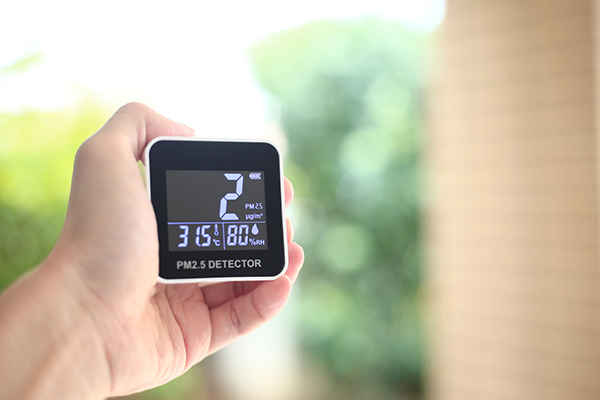Tackling indoor air pollution could save UK up to £40 billion a year, study finds

A new study by the Grantham Research Institute on Climate Change and the Environment at the LSE and Columbia University has found that a UK government subsidy towards an indoor air pollution monitor could lead to savings of up to £40 billion.
Researchers Sefi Roth and Robert Metcalfe found that the “productivity increases that go back to the Government more than offsets the upfront subsidy cost”. This would result from increased tax revenue from higher earnings and also significant reductions in healthcare spending by the NHS.
‘Making the Invisible Visible: The Impact of Revealing Indoor Air Pollution on Behaviour and Welfare’ is one of the largest field experiments on indoor air pollution ever completed in the developed world. The authors collected nearly 150,000 hours of data on indoor fine particulate matter measuring 2.5 micrometers or less (PM2.5), measurements of the US Air Quality Index (US AQI), temperature, and relative humidity over four weeks across 258 randomly selected households in the London Borough of Camden.
The authors found that average indoor PM2.5 concentrations (10.5 micrograms per cubic metre) were very similar to ambient outdoor PM2.5 concentrations (10.8 micrograms per cubic metre), both of which exceed current WHO and US EPA recommended limits of 5 and 9 microgram new per cubic metre. Importantly, the researchers also discovered that during hours when people are most likely to be indoors at home (16:00-23:00) and awake, active and exposed to the air quality in their dwellings, indoor pollution levels are significantly higher than outdoor pollution (14.6 vs. 12.2 micrograms per cubic metre), likely due to household activities such as cooking, heating, smoking and other indoor activity. Crucially, health impacts are driven by the actual exposure of people to indoor air pollution rather than average concentrations that occur in their homes.
The paper also shows that there are important predictors of levels of indoor air pollution, such as smoking, household income, and property ownership. This suggests a socioeconomic dimension to indoor air pollution, where lower-income households face higher exposure to higher levels of indoor PM2.5. Households with below-median income levels have indoor PM2.5 concentrations that are 20 micrograms per cubic metre higher than those of above-median income households. This relationship can be explained by numerous factors, such as poor housing quality, and thus can exacerbate existing inequalities in health, education, and productivity.
The results from this study, which was a randomised control trial (RCT), demonstrates that real-time feedback to people from air pollution monitors helped reduce indoor air pollution by 17% overall and 34% during occupancy time (16:00-23:00). The mechanism for these large reductions in PM2.5 came primarily through people responding by improving home ventilation, for instance by opening a window. The researchers also found that this real-time information changed residents’ beliefs about exposure, realising it was higher than they had thought.
The researchers also discovered that households were willing to pay more for mitigation measures to reduce their exposure through purchasing an air purifier than simply acquiring information about their pollution exposure.
This study is published as a working paper after review by the Grantham Research Institute and has been submitted to a peer-reviewed journal for publication.
Sefi Roth, Associate Professor of Environmental Economics at the London School of Economics, said:
“Indoor air pollution is often overlooked in policy discussions, but our landmark research has demonstrated why that can’t continue.
“Pollution inside the home can cause serious illness and lead to significant costs to the economy, so Government intervention has the potential for double benefit of improving population health and the state of the economy.
“While more research on this subject is urgently needed, our study shows that the potential economic and health benefits are huge.”
Robert Metcalfe, Professor of International and Public Affairs at Columbia University, said:
“Governments across the world need to take indoor air pollution seriously.
“People spend lots, if not, most of their time inside their homes and until we take that pollution seriously, we are going to continue to see negative impacts on health and productivity .
“Our study has shown why paying serious attention to inside air pollution must become a priority for every government.”
ENDS
Notes to editors
- London Borough of Camden distributed recruitment letters to a randomly selected sample of Camden’s residents. Individuals who were interested in the topic completed an online survey on demographics, dwelling specifics, and health and were then randomly assigned to either a control or treatment group.
- The experiment (RCT) was conducted as follows: Control group households received air pollution monitors that recorded real-time IAP levels but had their displays blinded (They only received information on the pollution in their homes at the end of the experiment). Treatment group households received the same monitors to collect baseline information, but after two weeks, the real-time IAP information became visible on their monitors. Additionally, households in this group received a two-page information sheet on interpreting the data and possible ways to reduce indoor pollution

